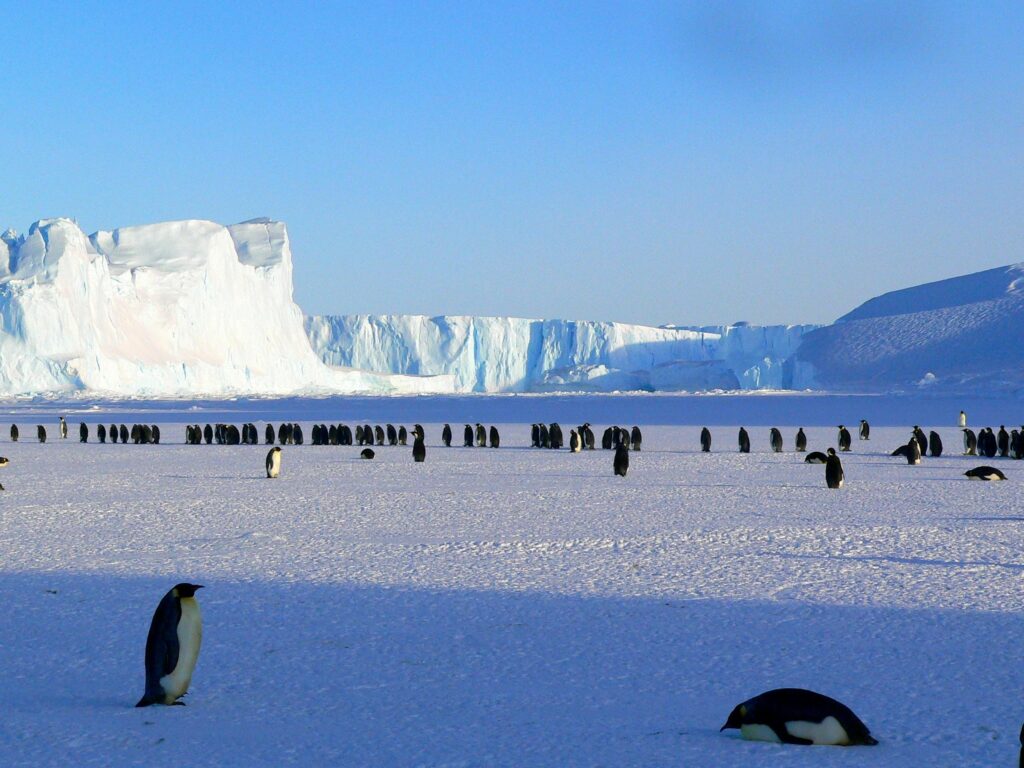Wildlife in Antarctica: the frozen frontier

Frozen Land
Antarctica doesn’t welcome you. It doesn’t have to. It simply exists — massive, frozen, and indifferent. This is the last continent. The edge of everything. A place where the rules are simple: adapt, or vanish. Yet against all odds, life not only survives here — it thrives in strange, spectacular ways.
There are no forests. No predators with fur. No cities leaking light into the sky. Just wind, ice, and a silence so vast it feels like the Earth has stopped speaking. And still, creatures gather: penguins by the thousands, seals sprawled on sea ice, krill pulsing beneath the surface, and whales moving like shadows below the frozen edge. They don’t need comfort. They need rhythm — and they’ve found it, in the coldest, driest, wildest place on the planet.
This is not wilderness for watching. This is wilderness for enduring.
Here, survival becomes beauty. Emperor penguins huddle for warmth while blizzards scream across the plateau. Leopard seals slice through black water. Snow petrels float like scraps of sky above white ridges. Each species is pared down to what works — no excess, no waste, just precision honed over time and trial. Every movement matters. Every breath is earned.
Antarctica is not alive in the way jungles are — loud, crowded, lush. It’s alive in pulses, in tides, in migration routes that stretch the length of oceans. It’s a system built on extremes, balanced by ice, and threatened by the warming breath of a world far away. What happens here feels distant — until you realize it’s not. This cold continent holds the currents, the weather, and the memory of the Earth itself.
Come here expecting emptiness, and you’ll find something deeper: stillness, scale, and the quiet persistence of life that never needed you to witness it.
There are no forests. No predators with fur. No cities leaking light into the sky. Just wind, ice, and a silence so vast it feels like the Earth has stopped speaking. And still, creatures gather: penguins by the thousands, seals sprawled on sea ice, krill pulsing beneath the surface, and whales moving like shadows below the frozen edge. They don’t need comfort. They need rhythm — and they’ve found it, in the coldest, driest, wildest place on the planet.
This is not wilderness for watching. This is wilderness for enduring.
Here, survival becomes beauty. Emperor penguins huddle for warmth while blizzards scream across the plateau. Leopard seals slice through black water. Snow petrels float like scraps of sky above white ridges. Each species is pared down to what works — no excess, no waste, just precision honed over time and trial. Every movement matters. Every breath is earned.
Antarctica is not alive in the way jungles are — loud, crowded, lush. It’s alive in pulses, in tides, in migration routes that stretch the length of oceans. It’s a system built on extremes, balanced by ice, and threatened by the warming breath of a world far away. What happens here feels distant — until you realize it’s not. This cold continent holds the currents, the weather, and the memory of the Earth itself.
Come here expecting emptiness, and you’ll find something deeper: stillness, scale, and the quiet persistence of life that never needed you to witness it.
